|
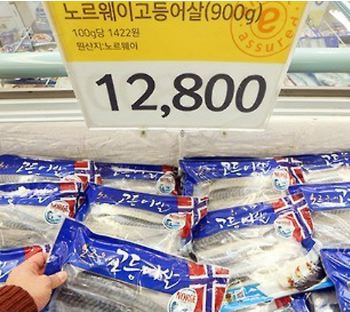
The mackerel that now reigns supreme as the most popular seafood product, according to a recent survey carried out by KMI. Photo: Stockfile/FIS
The mackerel has become South Korea's most popular fish - most of it is Norwegian
 SOUTH KOREA
SOUTH KOREA
Wednesday, July 03, 2024, 07:00 (GMT + 9)
The Norwegian mackerel is even more famous than Erling Braut Haaland.

Here at home, many people associate South Korea with K-pop, K-food, cartoons, Samsung and Hyundai. In South Korea, Norway is primarily associated with salmon, followed by mackerel and Vikings, shows a survey from Ipsos. Ipsos has also carried out a survey in which people are asked to state the origin of, among other things, salmon, mackerel and Haland. There, 78 percent answer that they know that salmon comes from Norway, 58 percent know Norwegian mackerel and 56 percent know that Erling Braut Haaland is Norwegian.
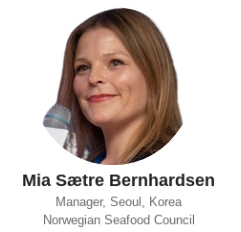 "It is not entirely surprising that Norwegian seafood produces one of the world's best footballers", says Mia Sætre Bernhardsen, who is the Norwegian Seafood Council's manager in South Korea. "It is not entirely surprising that Norwegian seafood produces one of the world's best footballers", says Mia Sætre Bernhardsen, who is the Norwegian Seafood Council's manager in South Korea.
For the inhabitants of the East Asian republic are at the top of the world in seafood consumption, with an average of around 68 kilograms per person over the course of a year. When almost 52 million inhabitants eat so much fish, shellfish, seaweed and kelp, the country has to import, and in recent years imports from Norway have steadily increased.
In 2019, Norway exported almost 61,000 tonnes of seafood to Korea with a value of close to NOK 3 billion. Last year, the same figures were over 72,000 tonnes and NOK 4.7 billion. This means that Korea will soon be as important a market for Norwegian seafood as Japan is. In 2023, Japan was Norway's 12th most important seafood market, measured in value, while Korea was in 14th place. So far this year (through May), however, South Korea has usurped 12th place from Japan.
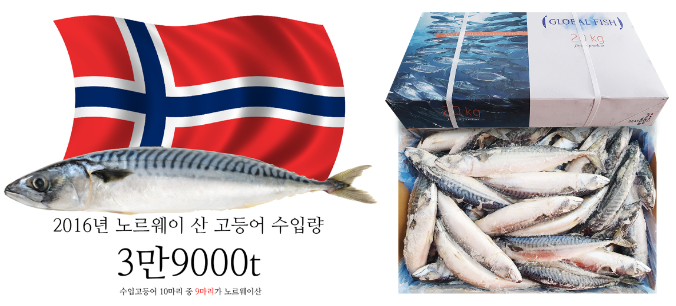
Everyone eats mackerel
South Koreans are very fond of squid, seaweed and kelp, halibut, shrimp and salmon. But it is the mackerel that now reigns supreme as the most popular seafood product, according to a recent survey carried out by the state-run Korean research institute KMI.
"Then it is extra fun that most of the mackerel is Norwegian", thinks Bernhardsen.
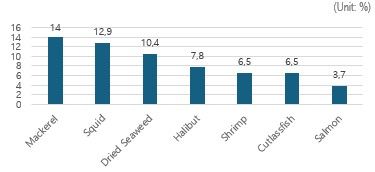
The table shows South Korea's most popular seafood species as of April 2024. Source: KMI National Perception Survey on Oceans and Fisheries.
You could almost say that South Korea's most popular fish is Norwegian mackerel, and not just mackerel: As much as 70 percent of the mackerel eaten by the country's inhabitants is of Norwegian origin.
KMI's report is supported by sales figures from Korea's largest online store, Coupang, and the Seafood Council's own surveys.
"With us, mackerel is one of the best-selling seafood products", says Jason JK, who is manager in Coupang's seafood department.
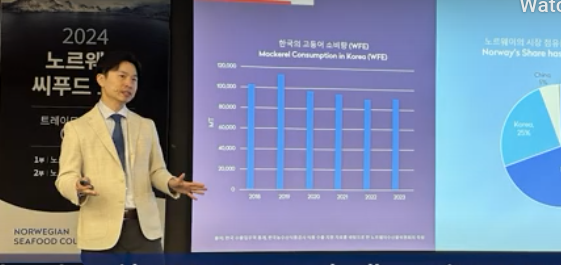
He cannot reveal how much they sell, but can say as much as most of the mackerel is Norwegian.
From the Seafood Council's surveys, it thus emerges that almost 6 out of 10 South Korean seafood eaters are familiar with Norwegian mackerel. In addition, 5 out of 10 eat mackerel at least twice a month. No one answers "never".
Large selection
The seafood selection in South Korean grocery stores is almost overwhelming for a Norwegian. This also applies if you shop online. Many people do that. As many as 28 percent of South Koreans buy their seafood in online stores or via apps. Grilled mackerel, marinated mackerel, mackerel fillets, mackerel in lunch boxes and ready meals, and even mackerel in tomato, are some of the things they have to choose from.
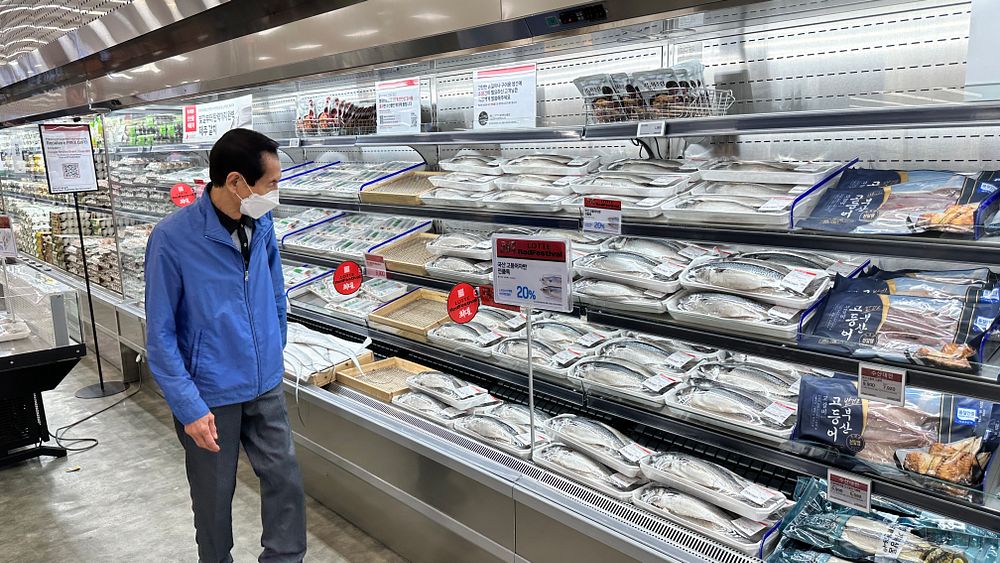
Mackerel abounds at Emart in Seoul. PHOTO: Neumann/The Seafood Council
Boneless fillets, ready meals and kirimi (cut slices) are the things that are increasing in popularity the most, it emerged when the Seafood Council held a mackerel and seafood seminar in Seoul in June. It was also there that the report to KMI was presented.
The research institute conducts regular national seafood surveys, and it was only in the latest report from April 2024 that the mackerel beat the squid to the top as the most popular seafood species.
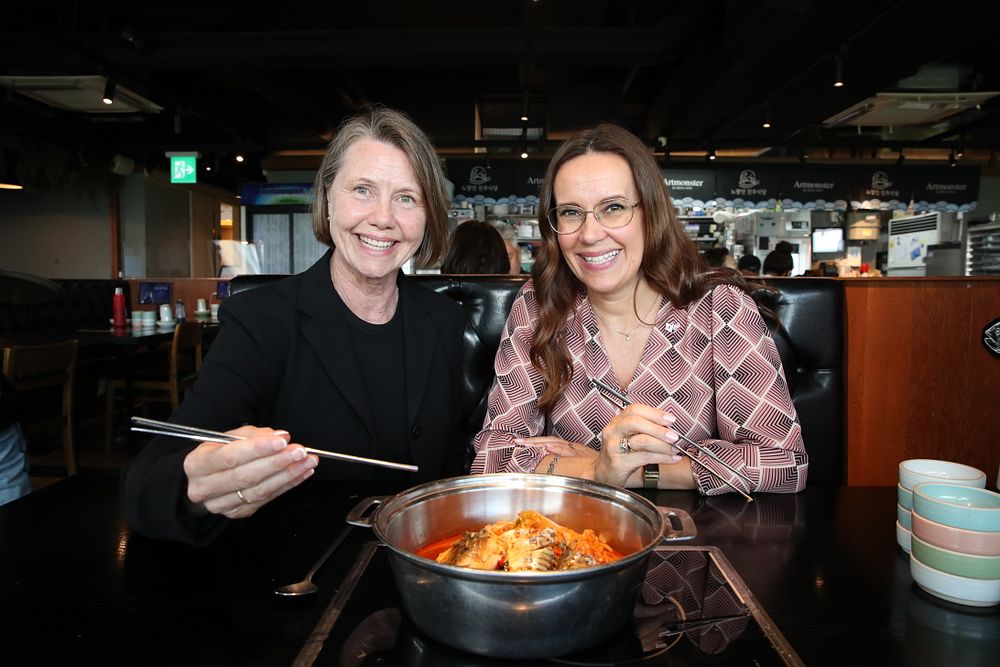
Fisheries Minister Marianne Sivertsen Næss (left) got a taste of the Korean mackerel dish "Godeongueo Jorim" when she visited the country in June this year. Here together with Norway's ambassador to South Korea, Anne Kari Hansen Ovind. PHOTO: The Seafood Council
In 2020, the analysis platform Lucy2 published an overview of South Koreans' associations with mackerel. Then most answered "sales, price, fish and Coupang". When the same question was asked in 2024, the answers had changed to "like, delicious/lovely, fish and recommend".
South Koreans' associations with mackerel in 2024. The size of the letters reflects the number who have given the same answer. Source: Lucy2
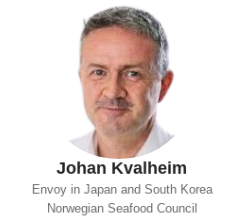 There may be several reasons for people's changed associations with mackerel in such a short time, among them the rapid development of several ready meals adapted to today's consumers, such as the high number of single households. There may be several reasons for people's changed associations with mackerel in such a short time, among them the rapid development of several ready meals adapted to today's consumers, such as the high number of single households.
"In addition, we like to think that the marketing work we have done on mackerel in Korea may have had a hand in the game", says seafood envoy in Japan and South Korea, Johan Kvalheim.
Of course, it is not something that is completely easy to measure, but in recent years the Seafood Council has focused heavily on changing people's attitudes and perceptions of mackerel. Through marketing and visibility in e-commerce and groceries, work has been done specifically to increase knowledge about Norwegian mackerel.
Seafood and health
South Korea has gone from being a poor, war-torn country after the Korean War, to becoming a highly developed country with a strong economy. But here, too, inflation and lower economic growth have left their mark after the pandemic.
"There are very few products that increase in sales volume, but most increase in price", Doo-Young Lee from the analysis agency Nielsen could say during the seafood seminar.
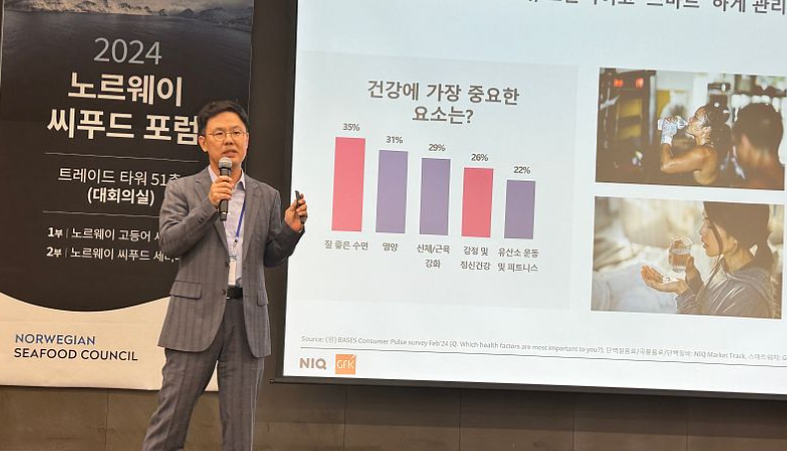
Doo-Young Lee (Director NielsenIQ) gave a lecture at the seafood seminar in Seoul, June 2024. PHOTO: Neumann/Seafood Council
The exception is goods and services that are about well-being, health, soundness and green values. Since 2020, quality, food safety and origin have become increasingly important to the Korean seafood eater, and more and more people choose food from the sea precisely because it is healthy. This is probably one of several reasons why not only mackerel, but also Norwegian salmon has had a good upturn in the Korean market.
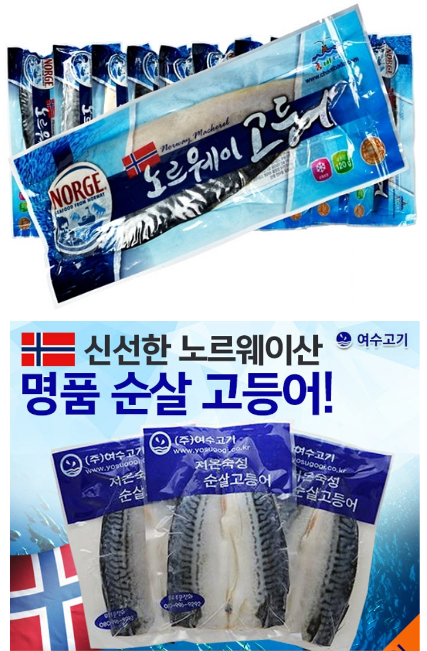 "The consumption of both raw salmon and salmon for heating has increased in the last 10 years. So far this year, consumption has been stable, but it is also strong at a time when prices are increasing and many other countries are reporting a decrease in salmon consumption", says Johan Kvalheim. "The consumption of both raw salmon and salmon for heating has increased in the last 10 years. So far this year, consumption has been stable, but it is also strong at a time when prices are increasing and many other countries are reporting a decrease in salmon consumption", says Johan Kvalheim.
The Seafood Council's surveys show that 3 out of 10 eat salmon at least twice a month.
After baseball, soccer is the most popular sport in South Korea. Nevertheless, both the salmon and the mackerel are, at least for now, better known than Haaland.
"The Koreans have really embraced Norwegian seafood", continues Kvalheim, who is looking forward to following the further development in the coming years.
In 2023, Norway exported over 27,000 tonnes of salmon worth NOK 3.5 billion to South Korea. In the same year, the direct export of mackerel was over 41,000 tonnes with a value of almost NOK one billion.
Source: Norwegian Seafood Council (translated from original in norwegian)
[email protected]
www.seafood.media
|



